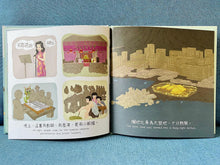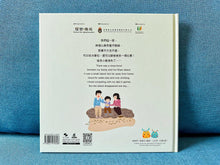
Learn about this little island that once was! From the creators of Visiting Factories with Grandpa, My Master is a Funeral Director, and The Vehicle Hospital comes a fourth bilingual title featuring another lesser known piece of history in Hong Kong.
Once upon a time, little island of Hoi Sham (海心島) symbolized happiness among the To Gwa Wan (土瓜灣) locals. It was the destination for day trips, where people prayed for love at the Hoi Sham Rock (海心石) and Lung Mo Temple (龍母廟), climbed and hung out at Fishtail Rock (魚尾石), and enjoyed all the yummy dishes served by the seaside!
Back then, life was considered simple. In contrast to the industrial To Gwa Wan area, Hoi Sham Island was the perfect little getaway.
However, a series of reclamation projects over the 1960s and 1970s slowly reshaped the shoreline of To Gwa Wan. The vacation vibe of the island slowly disappeared when it was finally connected to the main peninsula through land reclamation.
Hoi Sham Island eventually transformed into the Hoi Sham Park, and continue to be a popular spot for locals today. The food stall serving the delicious food by the seaside no longer exists though. And the statue of Lung Mo has since been relocated to Tin Hau Temple (天后古廟).
Living in this ever changing world, we know nothing lasts forever. By documenting the times from Hoi Sham Island, the creators hope to spark thoughtful discussion around city planning and development during times of urban renewal.














